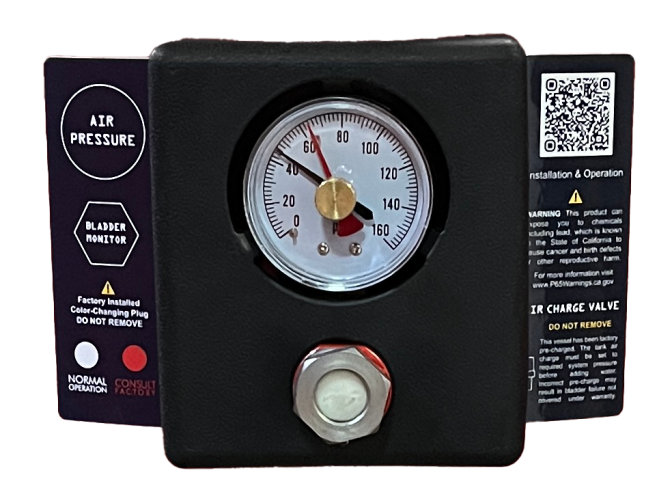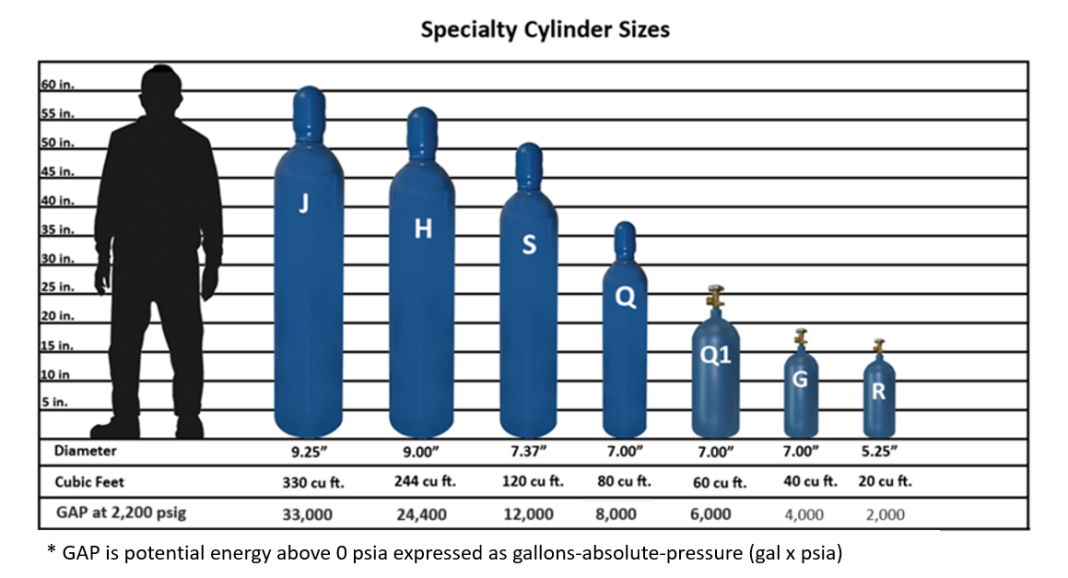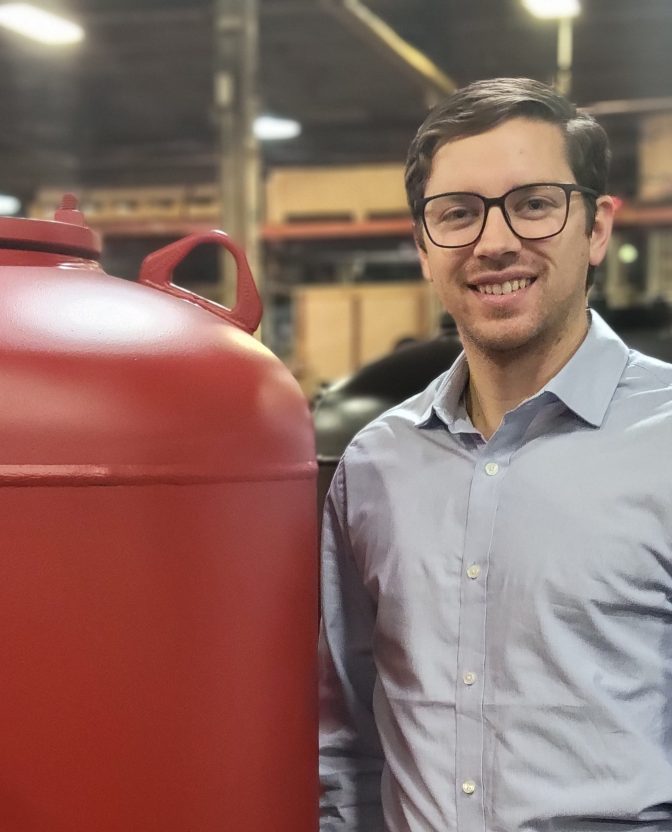 At times, an expansion tank pre-charge must be increased using compressed air. Wessels recommends dry, oil-free air like the compressed air used in our factory, which is taken to below -50°F and processed through a dryer. Another option is to use compressed nitrogen because it is an inert gas that avoids oxidation and moisture content that can corrode the system. Nitrogen also provides more consistent pressure and is readily available. But how many cylinders are needed to pre-charge a bladder tank to the desired pressure? There are several factors that need to be considered: the size of the compressed gas cylinders, the size of the expansion tank accepting the nitrogen, and the pressure that is needed for the pre-charge.
At times, an expansion tank pre-charge must be increased using compressed air. Wessels recommends dry, oil-free air like the compressed air used in our factory, which is taken to below -50°F and processed through a dryer. Another option is to use compressed nitrogen because it is an inert gas that avoids oxidation and moisture content that can corrode the system. Nitrogen also provides more consistent pressure and is readily available. But how many cylinders are needed to pre-charge a bladder tank to the desired pressure? There are several factors that need to be considered: the size of the compressed gas cylinders, the size of the expansion tank accepting the nitrogen, and the pressure that is needed for the pre-charge.
Additionally, we need to think in terms of stored potential energy. With the product pV (where p is absolute pressure and V is volume) equal to potential energy in joules (ft-lbf), we can calculate the energy in a cylinder of gas and compare it to the potential energy requirement of the bladder tank.
To make the units more conducive to gallons and psia, let’s use pV in terms of GAP (gallons times absolute pressure in psia). Gas cylinders are rated in cubic feet. This is actually the cubic feet of gas at 150 psig (164.7 psia) that, when released, would make up that amount of volume in cubic feet at 0 psia. In terms of potential energy in terms of GAP, the amount of energy in each cylinder is equal to 100 times the “rated” cubic feet of the cylinder. A 20 cubic foot cylinder charged to 2,200 psig yields a potential energy of 20 x 100 = 2,000 GAP.
Some common size cylinders whereas the rating in Cubic Feet based on 150 psig:

Be aware that the rating for the cylinders is referenced above 0 psia. If charging a tank to a pressure greater than 0 psia, which of course is any expansion tank, the potential energy will be somewhat less, but this will yield a close approximation. For example, if the tank at the job site is 250 gallons and needs to be charged from 40 psig to 90 psig, this requires the potential energy to be increased:
250 gallons × (90-40) psia=12,500 GAP
Bottle “H” is rated for 244 Cu.Ft. or 24,400 GAP above 0 psig. To recalculate the potential energy above 90 psig, a simple ratio should be used:

The 14.7 factor to convert psig to psia drops out of the equation and yields:

For the above example, the resulting cylinder potential energy above the 90-psig set point for the expansion tank calculates thusly:


The potential energy above 90 psig for the “J” 330 cu.ft. is 23,402 GAP and is large enough to handle the tank in this example. An alternative is to take two (2) “Q” tanks which also have the necessary GAP requirement for the example expansion tank.
An excel spreadsheet is available to download for evaluating most potential jobs.
 Written by:
Written by:
Sam Fuller
Technical Sales Engineer
Wessels Company






 At times, an expansion tank pre-charge must be increased using compressed air. Wessels recommends dry, oil-free air like the compressed air used in our factory, which is taken to below -50°F and processed through a dryer. Another option is to use compressed nitrogen because it is an inert gas that avoids oxidation and moisture content that can corrode the system. Nitrogen also provides more consistent pressure and is readily available. But how many cylinders are needed to pre-charge a bladder tank to the desired pressure? There are several factors that need to be considered: the size of the compressed gas cylinders, the size of the expansion tank accepting the nitrogen, and the pressure that is needed for the pre-charge.
At times, an expansion tank pre-charge must be increased using compressed air. Wessels recommends dry, oil-free air like the compressed air used in our factory, which is taken to below -50°F and processed through a dryer. Another option is to use compressed nitrogen because it is an inert gas that avoids oxidation and moisture content that can corrode the system. Nitrogen also provides more consistent pressure and is readily available. But how many cylinders are needed to pre-charge a bladder tank to the desired pressure? There are several factors that need to be considered: the size of the compressed gas cylinders, the size of the expansion tank accepting the nitrogen, and the pressure that is needed for the pre-charge.
 Written by:
Written by:






